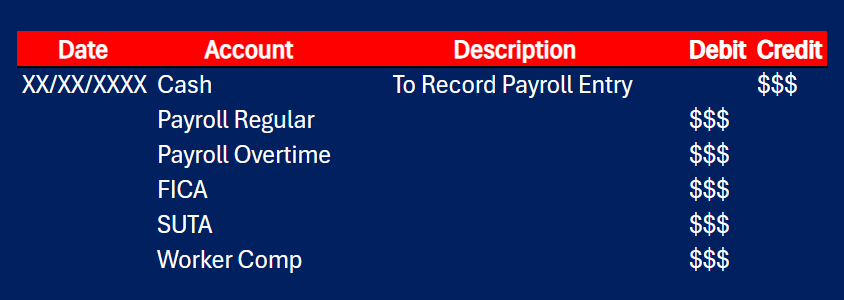A compound journal entry is a journal entry that includes more than two lines of entries.
Definition, Example, Advantage, Disadvantage

Compound Journal Entry Definition
A compound journal entry is a journal entry which affects three or more accounts. Compound journal entry involves:
- Debiting one account and crediting two or more accounts
- Crediting one account and debiting two or more accounts
- Debiting two or more accounts and crediting two or more accounts
Compound Journal Entry Example
Payroll entry is a great example of a compound journal entry.

Business loan payment is another example of compound journal entry.

Sales Tax journal is another example of compound journal entry. A company makes the sales tax journal entry (in this case a compound one) by debiting the cash account and crediting the sales revenue and sales tax account.

Compound Journal Entry Advantages
Compound journal entries offer many advantages such as:
- Time saving: Recording all debits and credits related to a single transaction in one place
- Record-keeping efficiency: Reduce the amount of multiple single journal entries
- Improve accuracy: Less mistakes are made since all related transactions are entered into one place,
Leave a Reply